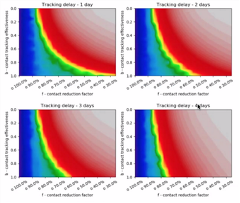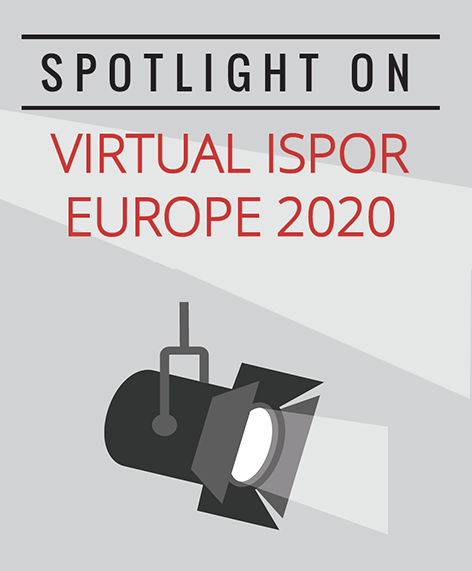Contact Tracing Policies for SARS-CoV-2: Lessons Learned to Inform Decision Makers
Nazneen Fatima Shaikh, BPharm, DPharm, Department of Pharmaceutical Systems and Policy, West Virginia University, Morgantown, WV, USA; and Purva Parab, BPharm, MS, Virginia Commonwealth University, Richmond, VA, USA
COVID-19 pandemic has generated an incredible amount of research in the field of prevention and therapeutics. Two of the measures discussed in ISPOR sessions include contact tracing and COVID-19 trial tracker. Contact tracing has the potential to reduce the number of infected cases whereas the trial tracker can help to understand the treatments options and their outcomes for the patients.
Contact Tracing for SARS-CoV-2
Contact tracing has been used as an early COVID-19 containment measure in combination with physical distancing measures. However, the precise impact of contact tracing is unknown in most countries. The session moderator Beate Jahn, Dipl-Math oec, Dr rer soc oec, University for Health Sciences, Medical Informatics and Technology, Institute of Public Health, Hall, Austria started the session by reviewing the objectives of the workshop: 1) to provide insights on 2 different agent-based COVID-19 models to inform decision makers in Austria, Poland, and Germany; 2) to illustrate how these models evaluated contact tracing, helped in understanding disease dynamics, communicating and guiding policy decisions; and 3) to create awareness of limitations.
“Models are only as good as the data.” —Tyll Krueger, PhD
Different Forms of Contact Tracing
Martin Bicher, TU Wien, Institute for Information Systems Engineering, Vienna, Austria presented different forms of contact tracing and modeling these in an agent based model. Tracing as a non-pharmaceutical intervention is the process of finding people with high risk for being infected by a new confirmed SARS-CoV-2 infected person. To model tracing, a contact network like shown in Figure 1 needs to be modeled. As seen in the figure, those who were traced using interview and contact location were more accurate in finding actual infections compared to those who were found by tracing app. It was also observed that increasing the strictness of a tracing measure and isolating policy might reduce the number of quarantined people.
Figure 1. Different Forms of Contact Tracing

The Interplay of Quarantine, Contact Tracing, and Contact Reduction
A study projecting the epidemic in Poland indicated that the number of daily detected cases would reduce rapidly if a strong lockdown is imposed versus a soft lockdown. The decline in number of daily detected cases with actual lockdown was slower than the predicted decline with a strong lockdown. Tyll Krueger, PhD, Institute of Computer Engineering, Control and Robotics, Wrocław University of Science and Technology, Wrocław, Poland provided his perspective on contact reduction and contact tracing on reducing the number of infected cases. In a study conducted by his group, increasing the contact reduction by 70% predicted higher contact tracing efficiency and also helped in reducing the fraction of population that was infected compared to contact reduction by 20%. Efficient contact reduction, testing, and contact tracing are key factors in controlling the COVID-19 pandemic and agent based modeling can quantify the impact. The fast rise of the number of daily cases can dramatically reduce the efficiency of testing and contact tracing.
“Detection of mild cases is equally crucial.” —Wolfgang Bock
Contact Tracing: The Modelers Point of View
Wolfgang Bock, PhD, Department of Mathematics, Technical University Kaiserslautern, Kaiserslautern, Germany provided his perspective from modelers point of view on contact tracing. Effective contact tracing with testing and household quarantine can keep the epidemic under critical levels. As seen in Figure 2, a delay between a positive test result and contact tracing increases the number of infected as a fraction of population (red zone). Contact diaries and apps can be more efficient in reducing the delay. Detection of mild cases is as important as detection of severe cases for efficient tracing. In Germany, due to capacity limits, only cases with severe symptoms were tested, which led to 75% of the positive cases without any tracking origin. In the long run, this led to increased infection rates. Using the app might help in efficient tracing of both mild and severe cases. A significant number of users are needed to show a beneficial effect. Testing, contact tracing, contact reduction, and app coverage have to be combined to show efficient results.
Figure 2. Tracking Delay and the Efficiency in Reducing the Number of Infected Cases

The session then concluded by all the panelists (Figure 3) acknowledging the challenges in modeling techniques. Data and validation being the 2 key challenges. A model is only as good as the data. Agent based modeling is a sophisticated modeling technique that requires good quality data to structure and visualize the outcomes. With increasing number of infections, data collection becomes more difficult.
Figure 3. Panelists (clockwise): Martin Bicher, Tyll Krueger, Beate Jahn, and Wolfgang Bock.

With subjects getting reluctant to report outcomes, it gets more difficult to validate the model. Reducing the number of unknown parameters and using calibration techniques to assess parameter outputs might help in improving validation. Evidence from prior literature can also be used to assess if the results align with the findings in the past.

